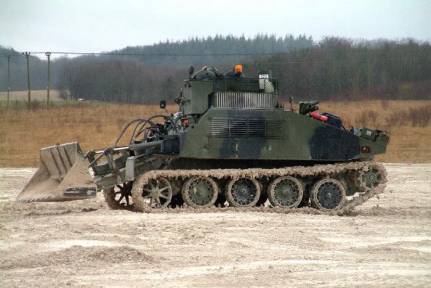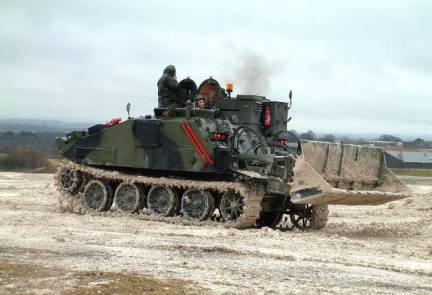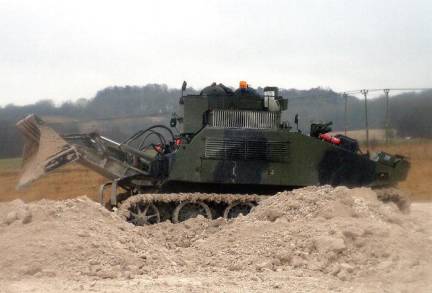FV180 Combat Engineer Tractor
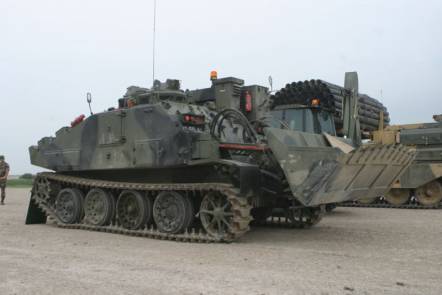
| Weight: | 17,010kg | Length: | 7.3m |
| Height: | 2.667m | Width: | 2.9m |
| Crew: | 2 | Maximum Road Speed: | 55km/h |
Entered Service in May 1978
In 1962 a General Staff Target (GST26) was issued for an engineer vehicle, which would combine the characteristics of an
armoured vehicle and an earth mover. Discussions were held between Britain, France and West Germany, and it was agreed that
a Combat Engineer Tractor would be jointly developed. Military Vehicles Engineerng Establishment presented a design and
subsequently two prototypes were built by the Royal Ordnance Factory at Leeds. These were powered by a Cummins V8 diesel,
developed 350bhp and were fully amphibious.
They were delivered in 1968 for testing, but France had opted to drop out, having different requirements for an engineering
vehicle.
In 1970 after testing in both West Germany and the Uk, the West Germans withdrew from the programme, requiring a more heavily
armoured vehicle. Meanwhile the CET was redesigned to utilise standard comericial componants wherever possible (engine,
transmission, steering unit), and to make the vehicle amphibious with minimum of preparation.
FV180 Combat Engineer Tractor Germany 1986
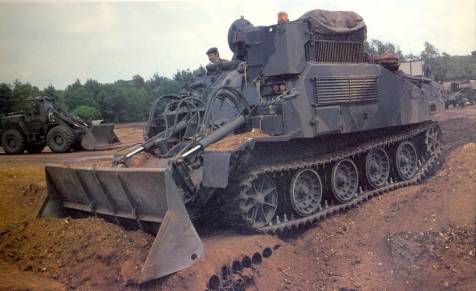
The contract for seven new prototypes, was awarded to Royal Ordnance Factory at Leeds based on the updated MVEE design, and
these were delivered between February 1973 and January 1974. After trials in West Germany and the United Kingdom, the Combat
Engineer Tractor was accepted for service with the British Army in 1975.
Production of the CET began in the Royal Ordnance Factory at Nottingham in 1977 and the first production vehicle entered
service in May 1978.
The CET is a tracked vehicle primarily for earth-moving, powered by a turbo-charged Rolls-Royce C6TFR 6 cylinder diesel
engine, developing 320bhp at 2100 rpm. Fuel capacity is 418 litres with a range of 320km.
It is aluminium armoured and fully amphibious. The CET in "swim" mode requires little preparation, a flotation bag is
secured in the earth-moving bucket and a "trim board is fitted to the front hull. In water the CET is propelled by two 330mm
Dowty 40/40B water jets. To help the CET leave the water a rocket propelled anchor can be fired and the CET can winch itself ashore.
FV180 Combat Engineer Tractor Front View
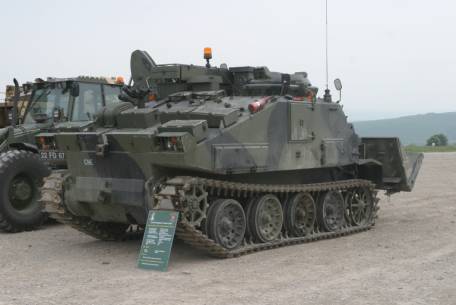
In 28 Amphibious Engineer Regiment, 6 CETs are held by the Amphibious Support Troop of 71 Amphibious Engineer Support Sqaudron.
Many thanks to Tony Hoare (plainmilitary@yahoo.co.uk) for the use of the following photographs:
FV180 Combat Engineer Tractor on Salisbury Plain
